LED manufacturers continue to innovate to improve economies of scale. One of the newest packaging solutions designed to help lower costs is chip-on-board (COB) light source modules.
COB (Chips on Board) , is a technology of LED packaging: Multi LED chips are packaged together as one lighting module. When it light up, it looks like a lighting panel. The manufacturers use a number of small size of chips to make COB LED package that emits light in the way that avoids uncomfortable glare as much as possible: When it lights up, it looks like a lighting panel. Heat dissipation is a very important aspect of LED lighting since it can have a major impact on the life expectancy of the luminary, and COB module can be built to have very good heat sinking properties.
My testing in LED lighting continues with 4W 48led COB LED Chip 480mA White/Warm White For DIY DC 12V to see how this COB technology works in practice (good test object because so cheap, I paid around 1 Euro for this). Here is the module installed to an old PC CPU heat-sink and power wires soldered to it.
4W 48led COB LED Chip 480mA White/Warm White For DIY DC 12V data from product page:
Features:
Type: COB LED
Lighting angle: 180 degrees
Light color: Warm White / White
Color temperature: 3000-3500K / 6000-6500K
Power LED Qty Current Luminous flux Diameter Voltage:
4W 48led 480mA 400 LM 40*35MM DC 12V
In this specific LED COB module there are 48 tiny LEDs inside the package (according to provided data), mounted on metal (aluminum) circuit board and covered with fluorescent material and transparent protective package. Based on the LED voltage range it operates, I quess there are three or four LEDs wires in series string, and there are several such strings wired in parallel. E expect the configuration to be pretty much as in this picture from Why and How Chip-on-Board (COB) LEDs Reduce Cost and Save Energy in Lighting Designs article:
Measurement results with different voltages and the current with those voltages:
10V barely lights
11v 0.02A light out
12V 0.2A lots of light
13V 0.45A maximum brightness
With those results it seems that this LED module could be powered with fixed 12V power source if I don’t need the maximum brightness (worked well with unregulated 12V DC 300 mA “wall wart”). If I want the maximum brightness, somewhat higher voltage and a constant current drive would be the best option.
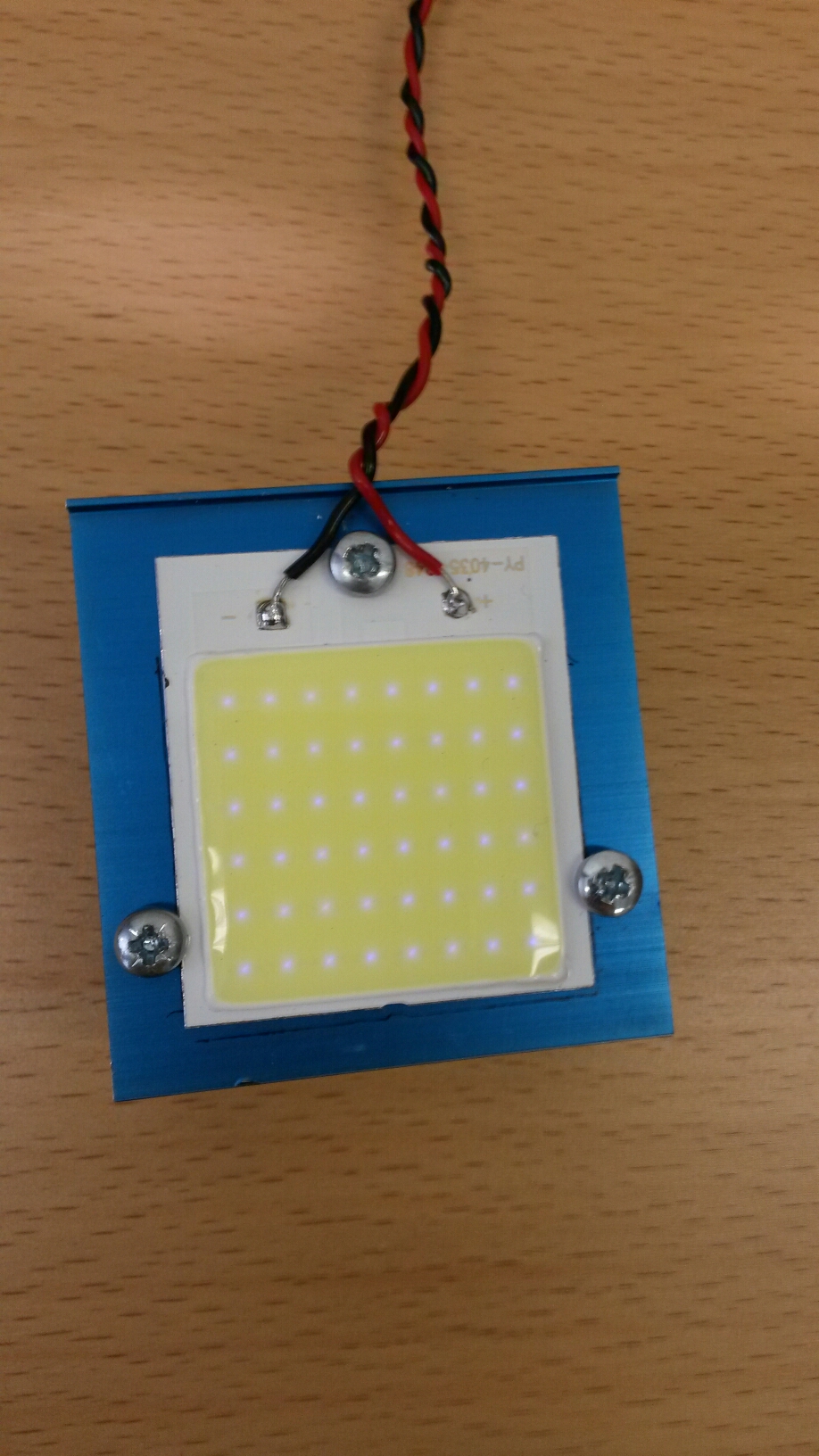

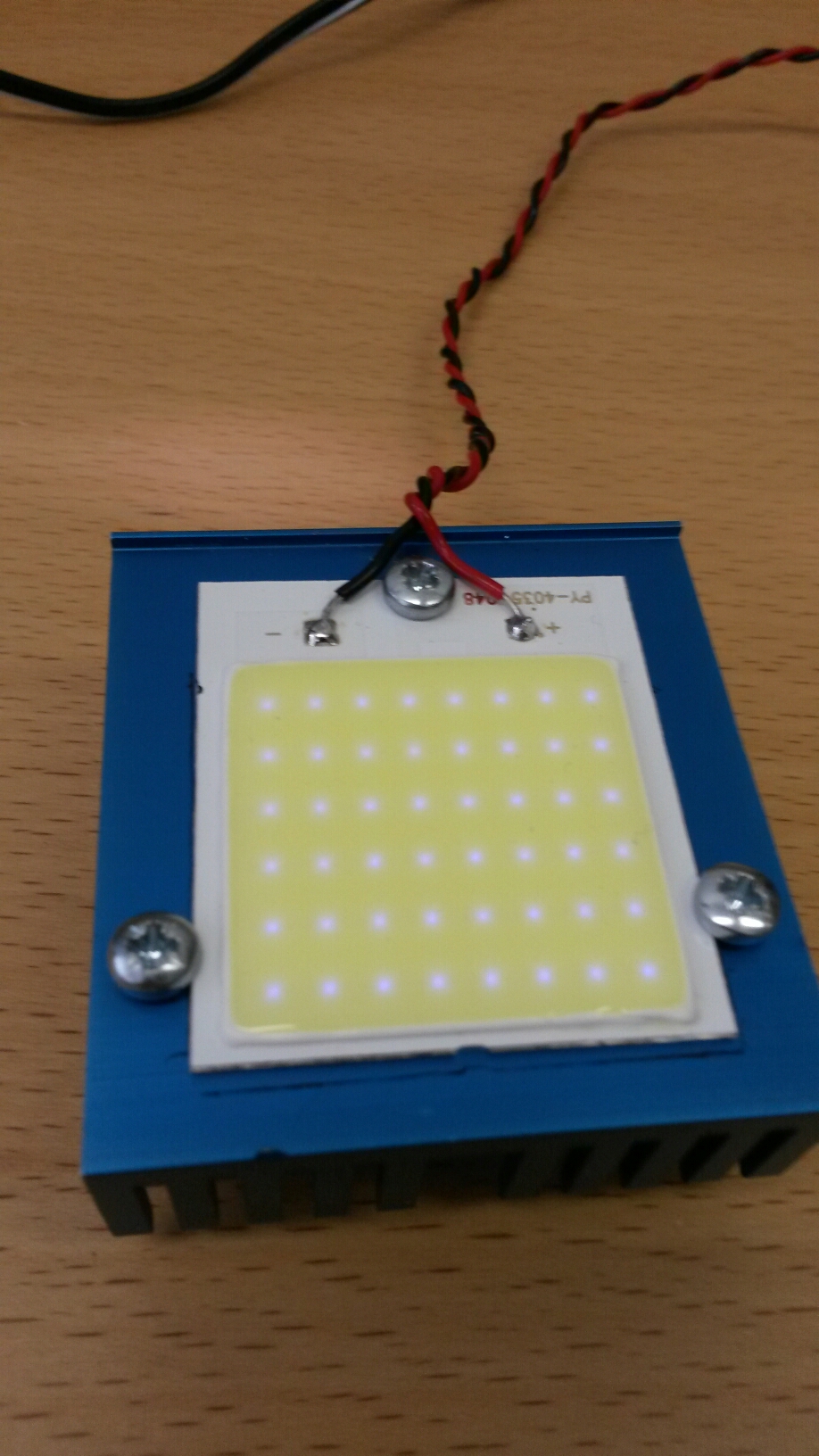
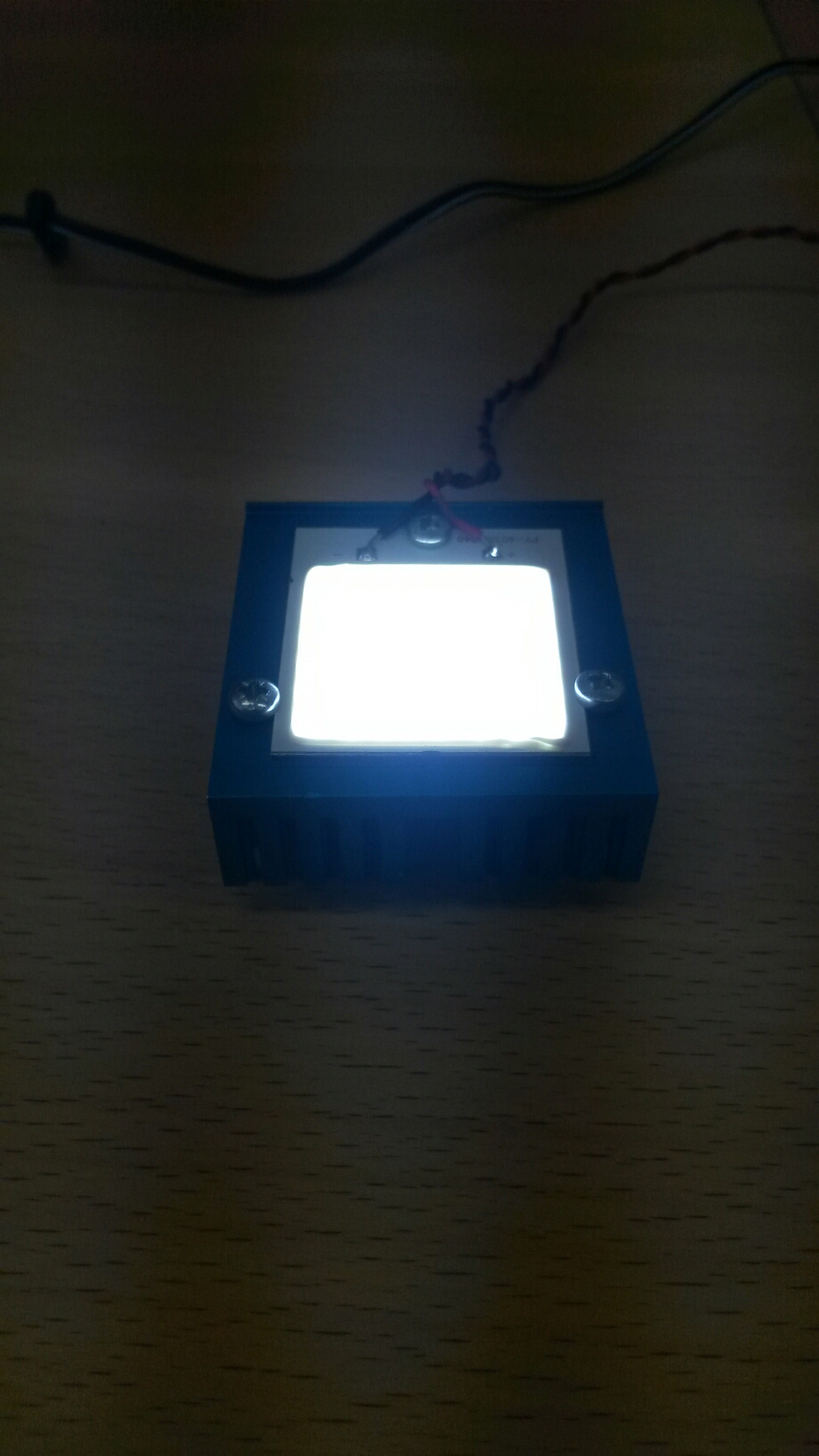
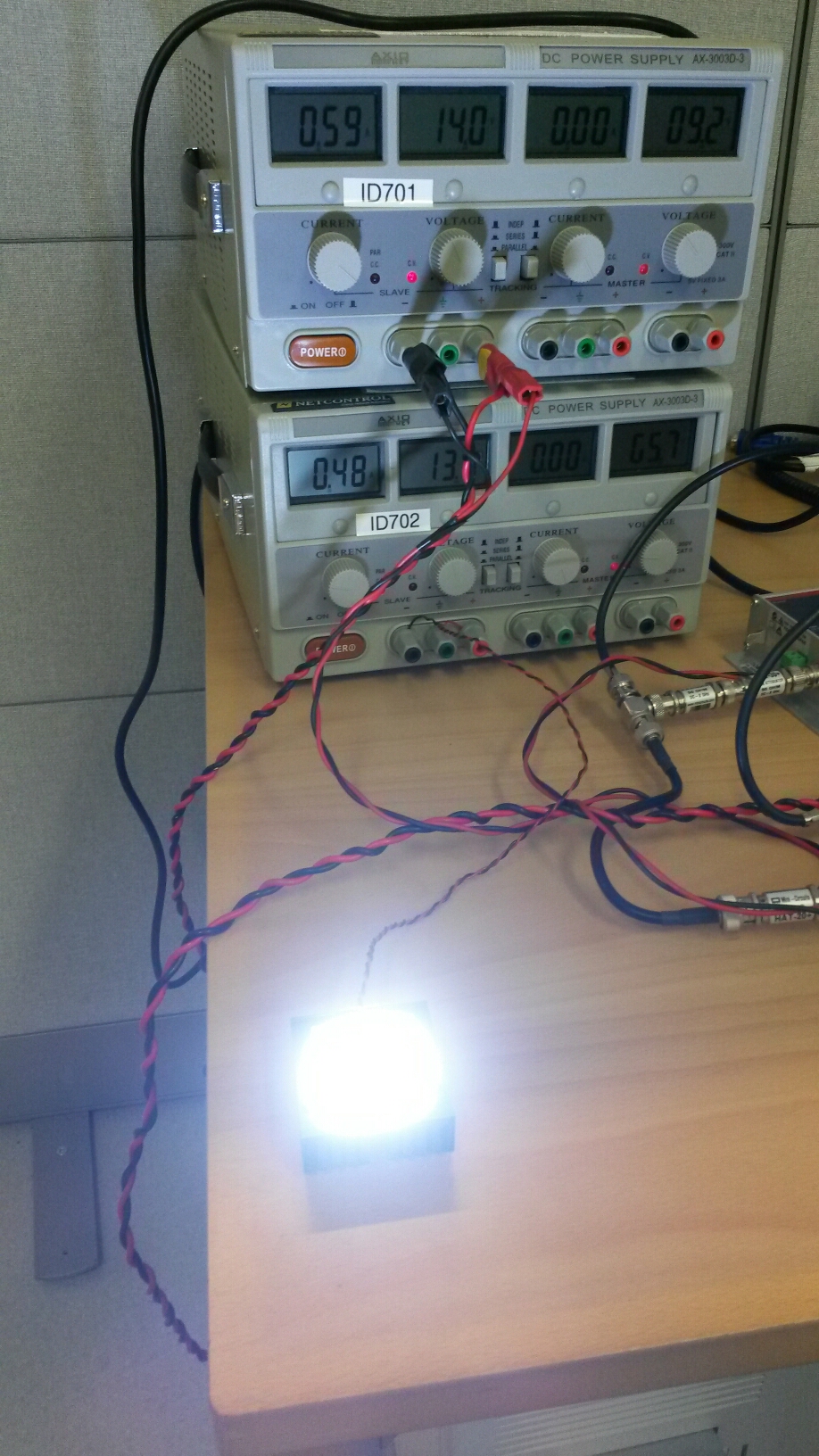
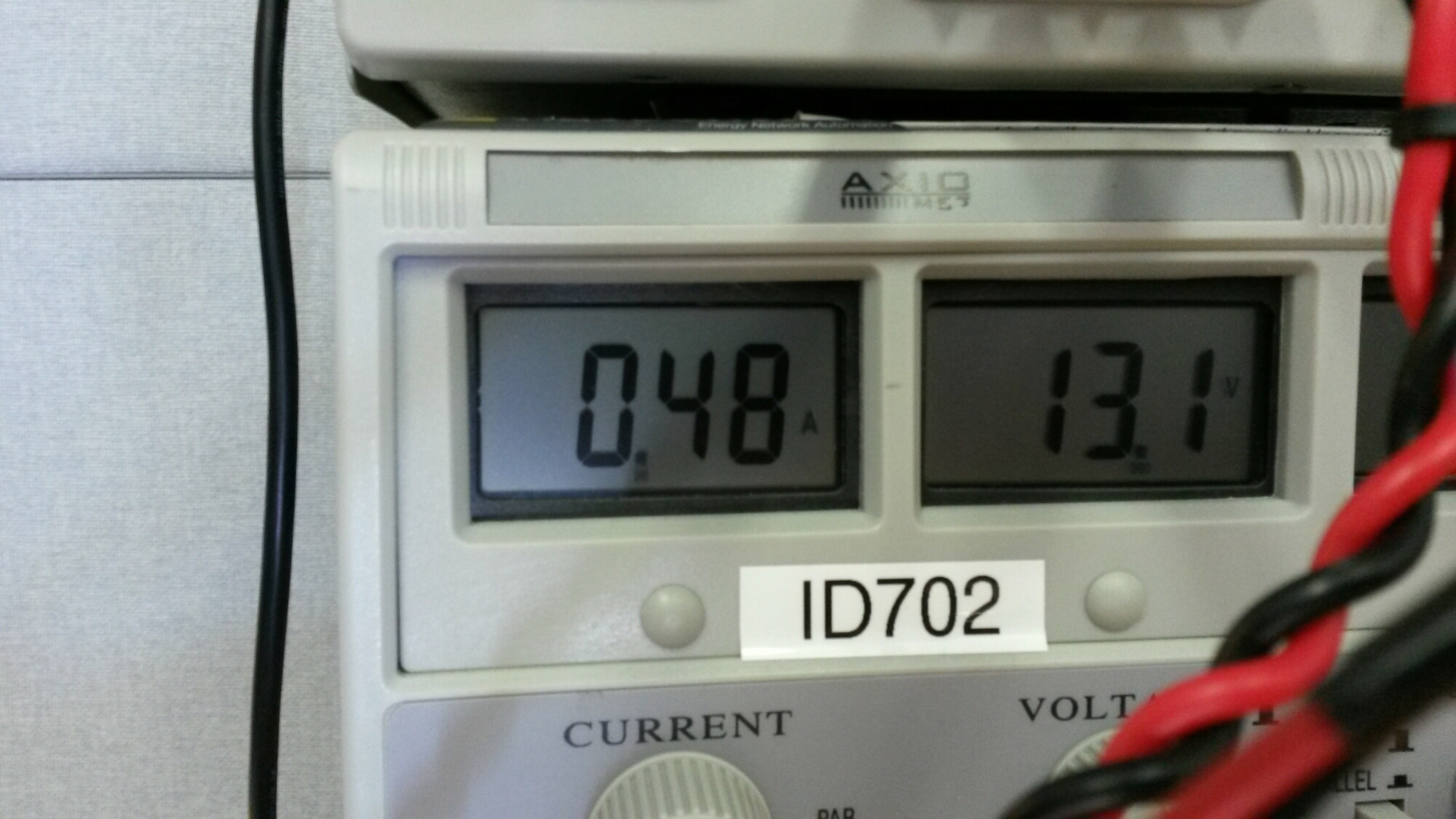
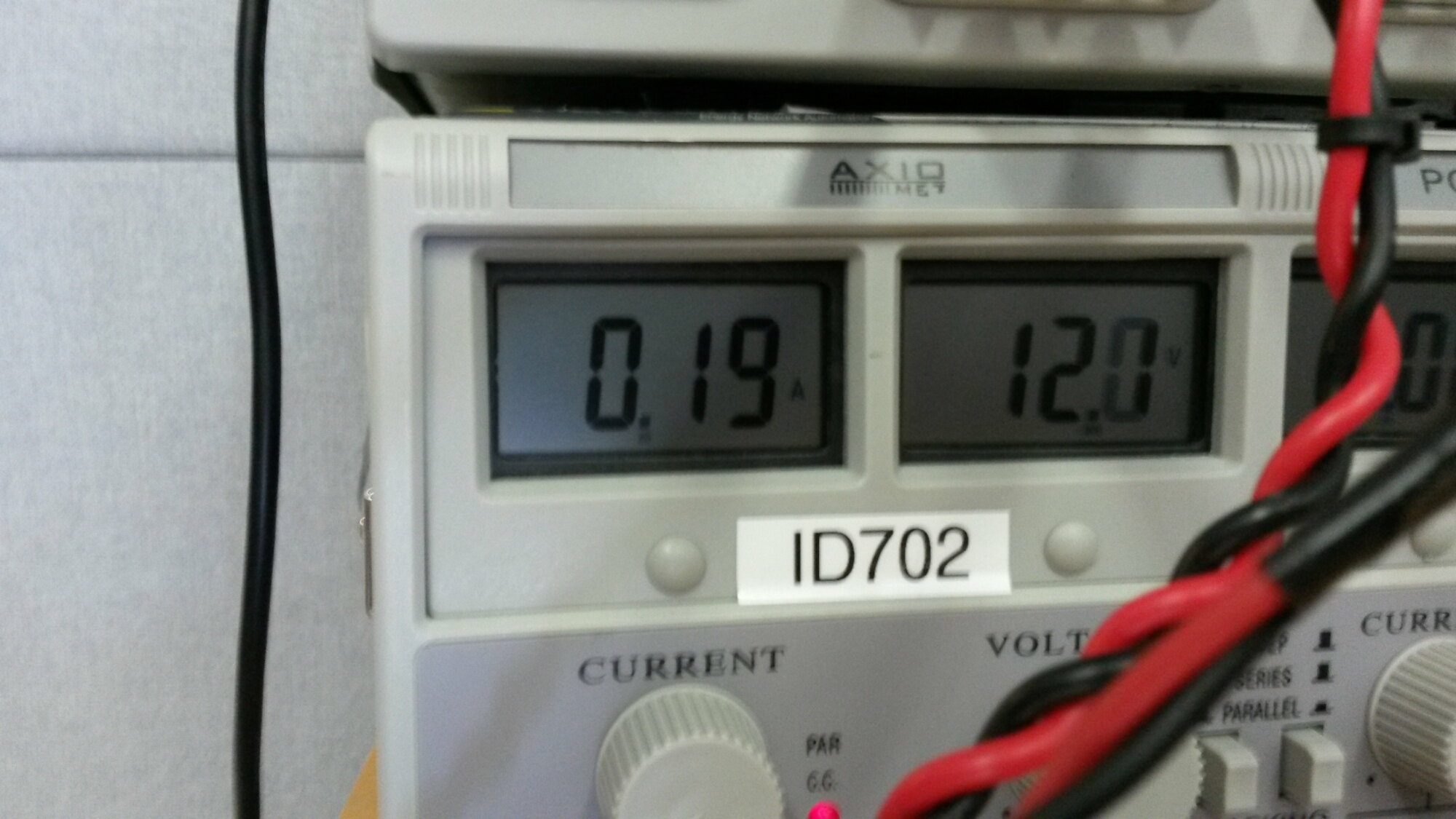
9 Comments
Tomi Engdahl says:
110V COB LED tube light
Ridiculously bright tube trouble light.
https://hackaday.io/project/25341-110v-cob-led-tube-light
This is based on a fluorescent tube light that is not quite bright enough, but super handy. The end result was ridiculously bright and overheats after about 15 minutes.
3D here: https://grabcad.com/library/110v-cob-led-tube-light-1
Tomi Engdahl says:
COB LED Basics: A Beginner’s Guide
http://ledgardener.com/cob-led-basics/
COB LED systems are actually quite simple – there are only a handful of different parts, and they all go together pretty easily. The main components of a COB LED system are:
The COB LEDs themselves
Heat sinks that the COBs are mounted to
LED drivers that power the COBs
The wires that interconnect the COBs and drivers.
Not so bad, right? Let’s delve a little further in.
Tomi Engdahl says:
Mains Voltage LED (and how NOT to handle mains voltage!)
https://www.youtube.com/watch?v=PklaByEQSZA
Testing a mains voltage LED from China. This one is rated 220V and 20W. It really can be connected directly to AC mains with no LED driver. 30W and 50W versions are also available. In the listings it’s called “smart IC” or “integrated driver” or “driverless” COB LED.
Tomi Engdahl says:
How To Repair The Led Floodlight / Reflector / Lamp
https://www.youtube.com/watch?v=_4xI0AdYlzQ
Tomi Engdahl says:
Mains Voltage LED (and how NOT to handle mains voltage!)
https://www.youtube.com/watch?v=PklaByEQSZA
Testing a mains voltage LED from China. This one is rated 220V and 20W. It really can be connected directly to AC mains with no LED driver. 30W and 50W versions are also available. In the listings it’s called “smart IC” or “integrated driver” or “driverless” COB LED.
Tomi Engdahl says:
LED Lights – How It’s Made
https://www.youtube.com/watch?v=vsvElqcu_E8
Manufacturing process of LED chips.
Tomi Engdahl says:
The next generation COB LED? (Radical new style of bare LED chip.)
https://www.youtube.com/watch?v=hpF5O0W8Bdg
I’m not sure how I missed this. It’s possibly because it’s a secret that has been hiding underneath a phosphor loaded gel out of sight.
Could this be the answer to the bond-wire problems in the early low voltage 20-100W LED modules? It’s a new package of bare LED dice/chip that can literally be soldered onto a PCB as if it was a standard surface mount component. Just a very-very small one.
The contact block on the PCB which was clearly not bear-proof looks more like a push-in style for solid core wires. My attempt to treat it like a Wago terminal and “open the spring loaded contacts” just forced the folded contact strip apart and broke the little tab that is just a wedge that is supposed to part the sides just enough to get a wire back out again.
Tomi Engdahl says:
Even BIGGER “200W” COB LED panel tests.
https://www.youtube.com/watch?v=ars0N8-jFzU
If I thought the COB LED panel was big the last time, then this is now officially the biggest I’ve ever seen. It’s based on a solid panel of aluminium with a PCB layer laminated on. The COB aspect (Chips On Board) indicates the way the bare LED chips are bonded directly to the PCB layer and bond wires attached between the chip contacts and the PCB.
Tomi Engdahl says:
Ledien teho kasvaa hitaasti, mutta varmasti
https://etn.fi/index.php?option=com_content&view=article&id=13494&via=n&datum=2022-04-28_15:02:32&mottagare=30929
Jos valaistusjärjestelmässä on satoja ledejä, kaksikin prosenttia merkitsee isoa säästöä. Luxeon-sarjan uutuudet ovat 3030 HE- (valaistus) ja SunPlus 3030 -komponentit (kasvihuoneet). Niiden värilämpötila kattaa alueen 2200 – 6500 kelviniä ja CRI-värintoistoindeksit ovat 70, 80 ja 90.